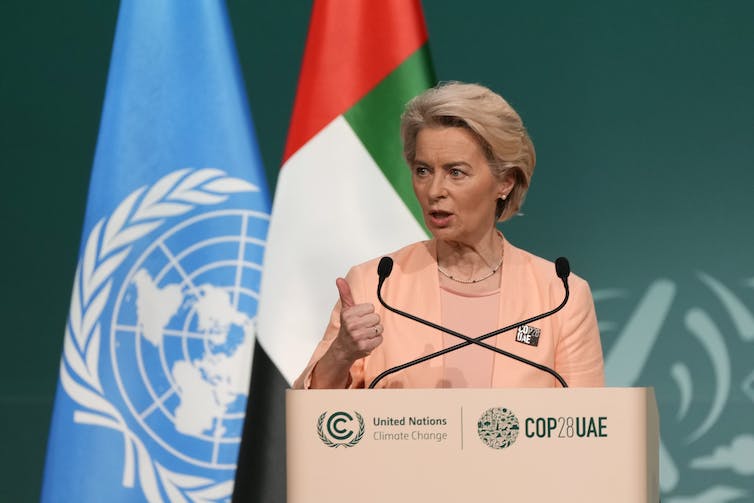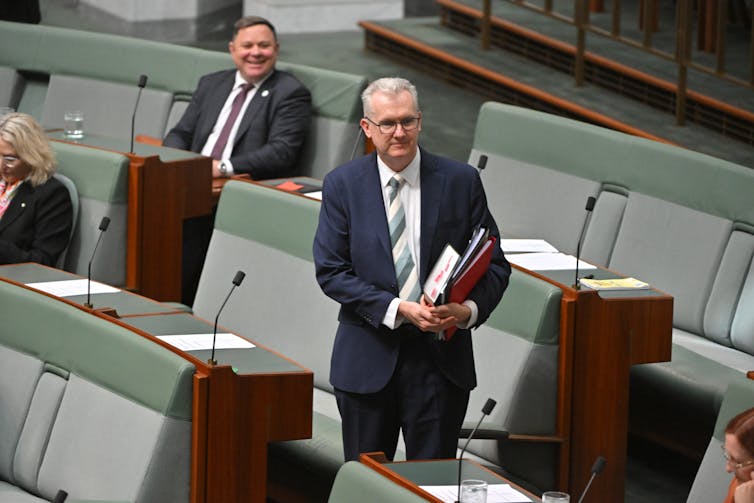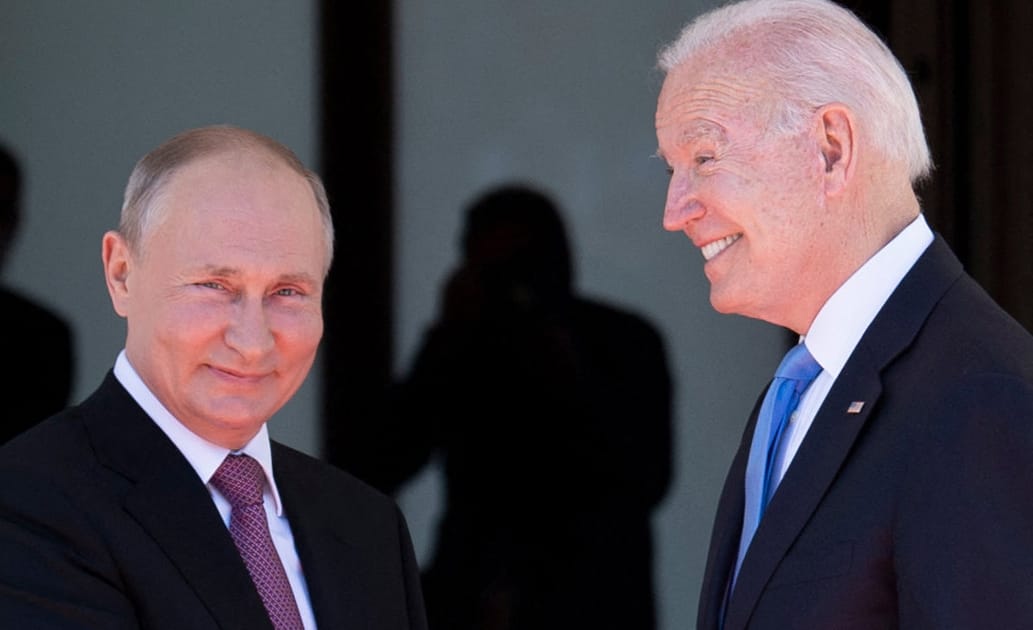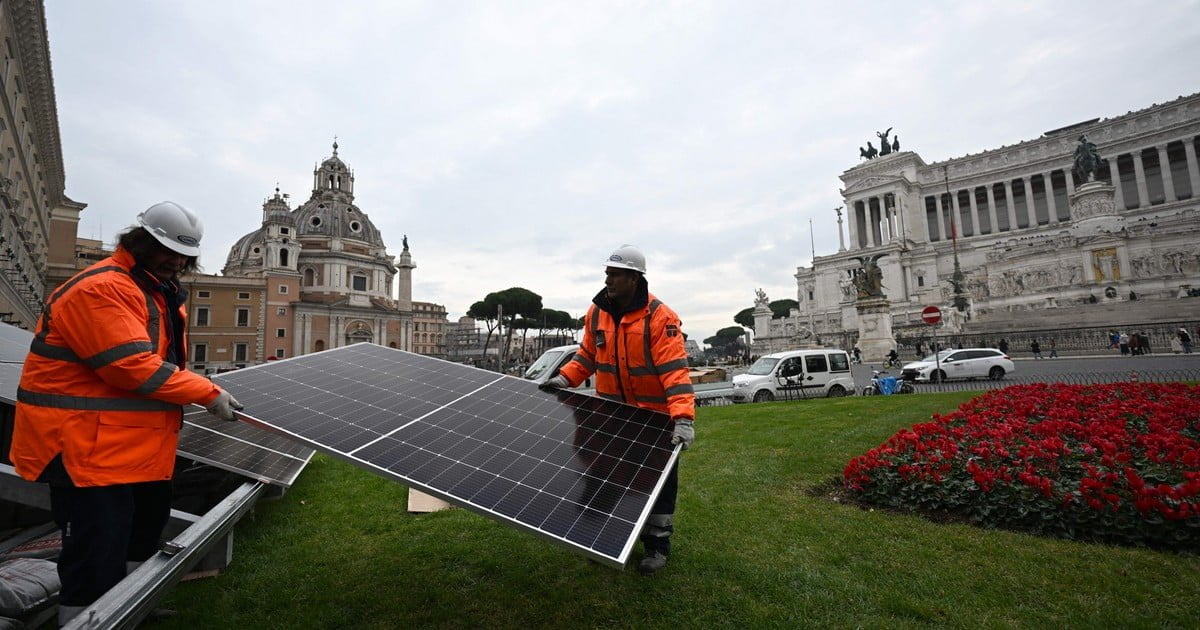As the world grapples with the dramatic effects of record temperatures in recent months, the United Nations has issued a dire warning about the potential for average global temperature increases to hit a “hellish” 3 C by the end of the century.
Carbon pricing policies have been a central part of the conversation about avoiding the worst effects of climate change. Carbon pricing is a market-based solution that incentivizes organizations and individuals to emit less greenhouse gases and invest in climate solutions.
Addressing an audience at the COP28 climate summit in Dubai, European Commission President Ursula von der Leyen made the case for carbon pricing: “If you pollute, you have to pay a price for that. If you want to avoid paying that price, you innovate and invest in clean technologies.”
However, it’s vital to understand both the potential and limitations of these policies. Our recent research shows that global carbon pricing policies must advance much more rapidly, and be combined with other mitigation measures, to avoid harmful warming scenarios. As von der Leyen said in her remarks, “we must go further and faster.”
(AP Photo/Peter Dejong)
Carbon pricing needs to rise
Carbon pricing can be a powerful tool to combat climate change and reduce emissions, but not on its own. Our research shows that carbon pricing in isolation will not allow us to meet the Paris Agreement target 1.5 C or 2 C warming scenarios.
If carbon pricing is implemented more aggressively and broadly, it could significantly contribute to meeting these targets. The current global average carbon price, which we estimate in our report at being a meagre US$2.79 per tonne of emissions, needs to increase rapidly.
Our study modelled the effects of a rising global price on carbon, in isolation from other policies, on reducing greenhouse gas emissions across a range of scenarios.
We found that while carbon pricing on its own could limit global warming to 2.4 C, the global price would have to rise dramatically and rapidly to accomplish this. The price would have to start at $223.31 per tonne in 2023 and increase to $435.55 per tonne by 2045.

THE CANADIAN PRESS/Graham Hughes
While such an abrupt global policy change is unlikely, the price would not need to be so high if it was accompanied by other measures, including regulations that provide clarity and stability regarding green investments, clean technology subsidies and financing mechanisms (such as those facilitating transition investing by companies).
For example, if we look at the carbon price needed to stay within 3 C scenario, it’s around US$85 per tonne — not much higher than our current Canadian carbon price of $65 per tonne. With the right other policies working in concert with that carbon price, and potentially funded by greenhouse gas emitters, we could still hit much lower than 3 C by the end of the century.
The case for carbon pricing
Our research also looked at the benefits of avoiding higher warming scenarios. The resulting savings from avoiding climate-related damage and economic loss from droughts, wildfires, floods, storms and rising sea levels would be enormous.
Our research estimates that cumulative damages under a 3 C warming scenario of US$480 trillion would be US$213 trillion higher than under a 2 C scenario, and US$326 trillion more than under a 1.5 C scenario. This confirms the importance of hitting the Paris Agreement targets.
Even if lower warming targets are missed, there is a strong case for carbon pricing. For example, keeping global warming to 3 C by 2100 in contrast to the zero-carbon price scenario of 4.2 degrees warming, could prevent cumulative damages of US$284.73 trillion — almost three times the current global GDP of US$105 trillion.
We are talking about worlds of damage here — and that is just the economic price tag, of course. It doesn’t account for the devastating human cost of climate disasters that we’re already seeing in homes destroyed, livelihoods ruined and lives lost. The message is not to give up, but to intensify efforts and co-ordinate globally.




